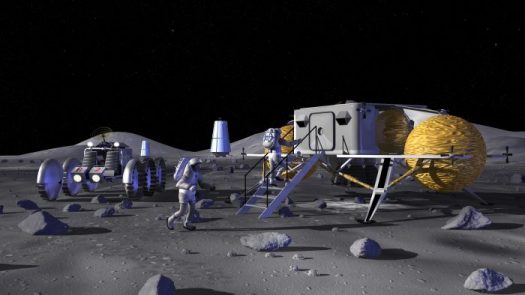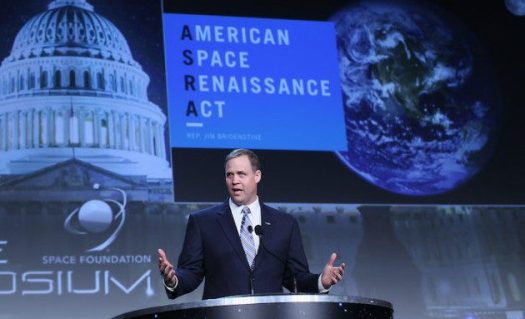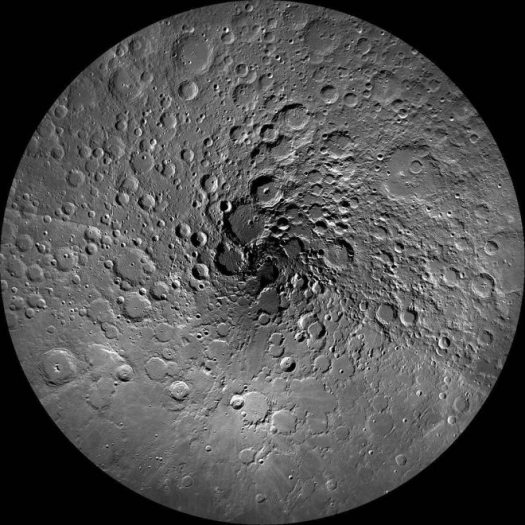
Reading about some of the views coming from the man recently nominated to become NASA’s Administrator, Rep. James Bridenstine of Oklahoma, I heard the sound of a door closing.
Other doors will surely be opened if he is confirmed by the Senate, but that shutting door happens to be to the gateway to a realm that has engrossed and nurtured me and clearly many millions of Americans.
What is happening, I fear, is that our Golden Age of space science, of exploration for the sake of expanding humanity’s knowledge and wonder, is about to wind down. The James Webb Space Telescope will (probably) still be launched, and missions to Europa and Mars are on the books. But to be a Golden Age there must be an on-going vision for the future building on what has been accomplished.
When it comes to space science, that clearly takes strong government support and taxpayer money. And if what I’m reading is correct, a lot of that future NASA funding for exploring and understanding the grand questions of space science will be going instead to setting up and maintaining that colony on the moon.
And the goals Bridenstine appears to have in mind when he speaks of setting up a moon colony are decidedly military, strategic and commercial. As when Vice President Mike Pence spoke to NASA workers at the Kennedy Space Center to telegraph the Trump Administration’s space vision, space science is essentially an afterthought.
Media coverage of the Bridenstine selection has tended to focus on the fact that he’s a politician and that he has earlier been quite critical of climate change science.
But what concerns me most are his views about space science in general. Because with the money and focus a major moon colony project would take, NASA’s space science initiatives run the risk of returning to the back seat they occupied in the agency’s earlier days.

A former jet pilot, director of the Tulsa Air and Space Museum and an early supporter of then candidate Donald Trump, Bridenstine has been clear for a long time about his priorities in space. I think we have to assume they correspond to the views of those in the White House.
In a speech last year to the Lunar Exploration Group titled “This is Our Sputnik Moment,” he pointed to what he described as a major missed opportunity the mid 1990s “discovery” of water at the poles of the moon by a Defense Department mission. (It was actually a Navy-NASA mission that first made the detection, and it hinted at the presence of water rather than proving anything. The proof came later via missions by NASA, the Japanese space agency, the Chinese space agency and perhaps most important, the Indian space agency.)
Here are excerpts from the talk he gave, which I am quoting at length to to give a better feel for his mindset and for the kind of change he is proposing. These are points consistent with talks he has given many times before and are memorialized in his proposed American Space Renaissance Act. American space activities, he makes clear, should focus first and foremost on cis-lunar space, the area between the moon and Earth.
“This single discovery” of frozen water on the moon, he said, “should have immediately transformed America’s space program. Water ice not only represents a critical in situ resource for life support (air and water); it can be cracked into its components, hydrogen and oxygen, to create the same chemical propellant that powered the Space Shuttle.
“From the discovery of water ice on the moon until this day, the American objective should have been a permanent outpost of rovers and machines at the poles with occasional manned missions for science and maintenance. The purpose of such an outpost should have been to utilize the materials and energy of the moon to drive down the costs and increase the capabilities of cis-lunar space. Let’s talk about why.
“The watershed discovery of lunar ice happened at a time when space was transforming all of our lives, ” he continued. “Today, our very way of life depends on space. We have transformed how we communicate, navigate, produce food and energy, conduct banking, predict weather, perform disaster relieve, provide security, and so much more.
“Each of these market segments continues to grow and improve the human condition on Earth, but a 2013 study by the Inter-Agency Space Debris Coordination Committee determined that the debris population in low earth orbit will continue to grow due to collisions even if nothing new is launched. Catastrophic collisions such as Iridium 33-Cosmos 2251 [which took place in 2009] will occur every five to nine years. Each such collision will create thousands of pieces of debris and result in more collisions.”
With so many satellites and much debris in low-earth orbit, Bridenstine said, it has become increasingly hazardous to send up multi-million and billion-dollar satellites. One way to limit the congestion, he said, is to make satellites fly higher and live longer, and that means getting them additional fuel to stay on course. The way to do that, he argues, is to gear up that envisioned water-cracking facility on the moon to produce the hydrogen to refuel satellites. A potentially reasonable series of points.

Then comes what would be a real game-changer:
“This is only possible because of all the risk that the government has already retired for these capabilities. Now, the U.S. government should play a part in developing the tools for lunar energy resource development, cis-lunar satellite servicing, and maintenance. The U.S. government must work to retire risk, make the operations routine, and once again empower commercial companies.
In other words, the U.S. government and presumably NASA should do the heavy lifting to create (and fund) this architecture so that commercial companies — among others — can profit from it.
This investment, he said, “has already worked to an extent in low Earth orbit, and now we should apply this model to cis-lunar space. This is not only appropriate for economic development and to improve the human condition on Earth, but to provide for national security, which is now entirely dependent on space-based capabilities. Every domain of warfare today depends on space.
“Once the cis-lunar market develops to service and maintain our traditional space-based military and commercial capabilities, other opportunities will naturally follow. The surface of the moon is composed mainly of oxides of metals: iron, magnesium, aluminum, silicon, titanium and others.

“While these oxides can be used to produce oxygen for life support and metals for additive manufacturing in situ, they will not likely be exported to earth. However, it is possible, if not likely, that highly valuable platinum group metals are much more available on the moon from astroblemes than they are on earth.
“Such a discovery with cis-lunar transportation capabilities would fundamentally transform American commercial lunar development and could profoundly alter the economic and geopolitical balance of power on Earth. This could explain the Chinese interest in the moon. The question is: What are WE, the United States, doing to make sure the free world participates economically in such a discovery? The U.S. government has a role to play here.
“Competition for locations on the moon (the poles) and resources is inevitable. It must be stated that constitutionally, the U.S. government is required to provide for the common defense. This includes defending American military assets in space AND commercial assets in space, many of which have and will have a dual role of providing commercial and military capabilities. President Kennedy said, ‘Whatever men shall undertake, free men must fully share.’
“The U.S. government must establish a legal framework and be prepared to defend private and corporate rights and obligations all within keeping the Outer Space Treaty. And to enable freedom of action, the United States must have cis-lunar situational awareness, a cis-lunar presence, and eventually must be able to enforce the law through cis-lunar power projection. Cis-lunar development will either take the form of American values with the rule of law, or it will take the form of totalitarian state control. The United States can decide who leads.”

So this is where a moon colony leads us as viewed by a proponent: to a day when satellites and spacecraft can be fueled with lunar hydrogen while in space, but also with potential turf wars on the moon over the source of that precious hydrogen fuel. To an expansion of American might and power to meet the perceived need to dominate space between Earth and the moon. And to a desire to exploit the moon for platinum and potentially other riches.
The only references I’ve seen from Bridenstine about space science are that a moon colony could be a good refueling and take-off point for travel to deeper space, and the belief that while sending humans to Mars should be a long-range vision, it isn’t going to happen anytime soon. In fairness, it must be said that Bridenstine has pretty consistently voted in favor of NASA space science projects in the past, and he has not shown hostility towards planetary or orbiting observatory missions. But that was before there was a costly moon colony infrastructure to potentially build.
In some ways a NASA U-turn like this was almost inevitable. The agency that made its historic mark with the Apollo program has been, with limited exceptions, out of the humans-to-space business for years. Rockets and capsules to change this are on their way, and many possible uses for this very powerful and very costly equipment has been debated for some time.
All the while, in the place of human exploration of space has been the phenomenal success of the space science program — with its grand observatories like the Hubble (and soon the James Webb Space Telescope), unmanned mission such as Cassini (to Saturn) and Juno (to Jupiter) and New Horizons (to Pluto,) ground-breaking surveys of the exoplanet world by Kepler, and the now five years of Curiosity roving on Mars.
All have been immensely popular with the public by any measure, and I like to think they helped people understand much better the world in which we live. But the missions are clearly less appealing to commercial, military and generally strategic forces that seem to want a very different kind of American space program.
Our overall national space effort has always spent more on the military side than the civilian, and NASA has also obviously played a role that is both geopolitically and militarily important.
But at its heart, NASA has for some time been about exploring and better understanding the planets and exoplanets and stars and galaxies of our universe (those Many Worlds,) and thereby enriching, enormously, I believe, life here on Earth.
The cis-lunar vision of Bridenstine and others may fail to get off the drawing boards, rather like the Obama Administration’s plan to capture and pull an asteroid towards Earth where astronauts could learn how to live and work in deep space.
But change is in the air, and the selection of Bridenstine is a pretty clear sign of how and where the winds are blowing.
